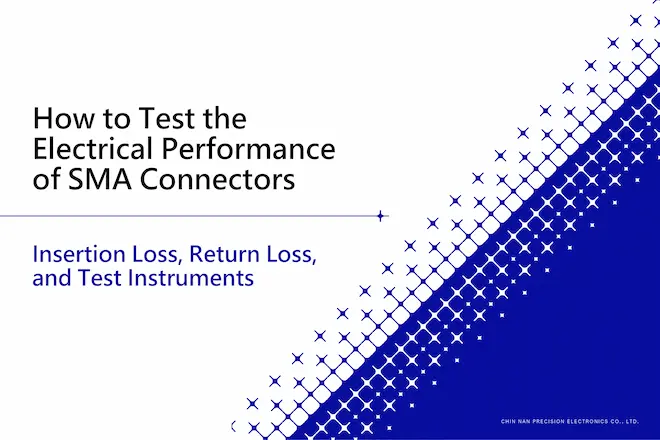How to Test the Electrical Performance of SMA Connectors|Insertion Loss, Return Loss, and Test Instruments

How to Test the Electrical Performance of SMA Connectors|Insertion Loss, Return Loss, and Test Instruments
When test values look abnormal, is it a connector defect or a measurement error?
In RF product design and validation, you may have encountered situations like:
“Why does the insertion loss increase by 1 dB right after soldering an SMA connector?”
“Why does the return loss fluctuate so much when I just change one cable?”
These cases are common. The truth is, SMA connector test results are influenced not only by product quality but also by instrument accuracy, test procedures, installation practices, and environmental conditions.
This article explains Insertion Loss (IL) and Return Loss (RL) testing methods, the role of VNAs vs. spectrum analyzers, and practical tips to improve measurement accuracy while avoiding misjudgments.
1. Abnormally High Insertion Loss: Common Causes and Fixes
When validating SMA connectors, high insertion loss often leads engineers to suspect product failure.
Insertion Loss (IL) represents signal attenuation through the connector, measured in dB, but measurement errors themselves are a frequent cause.
For reference: A quality SMA connector at 6 GHz typically shows IL < 0.2 dB.
Common causes of abnormal IL:
- Aging or damaged test cables
- Poor soldering (cold joints)
- Loose or oxidized contacts
- Incorrect frequency range during testing
Tips & Solutions:
- Use a calibrated VNA with precision test cables
- Regularly inspect connector appearance for deformation or oxidation
- Tighten connectors securely to prevent micro-loosening
- Compare with a reference standard to eliminate system errors
2. Why Return Loss Measurements Are Unstable
Return Loss (RL) evaluates impedance matching. Higher values are better, typically >20 dB. In practice, RL often fluctuates or differs across repeated tests.
Main reasons:
- Impedance mismatch between instrument and connector interface
- Inconsistent torque when tightening connectors
- Electromagnetic interference (EMI) in the environment
Tips & Solutions:
- Use a torque wrench (e.g., 8 in-lb) to ensure consistent connection
- Test in a low-interference environment
- Confirm that the test frequency stays within the SMA rating (usually 6–18 GHz)
3. Which Instrument to Use? VNA vs. Spectrum Analyzer
Many labs have both a Vector Network Analyzer (VNA) and a spectrum analyzer—so which is correct for SMA connector testing?
The answer: Use a VNA for nearly all SMA electrical performance tests.
- VNA: Measures S-parameters (S11, S21), accurately reflecting IL and RL
- Spectrum Analyzer: Ideal for viewing frequency spectra and interference, but cannot measure S-parameters directly
Tips & Solutions:
- For IL and RL → Always use a VNA with calibration kits (Open/Short/Load/Through)
- Select a VNA frequency range that covers your application (e.g., ≥20 GHz for high-frequency designs)
- Perform regular calibration to maintain data accuracy
4. What Leads to Misinterpretation? Connectors Are Not the Only Factor
Even with identical SMA connectors, different labs may report inconsistent results, leading to doubts about product quality.
In reality, test conditions often cause variation.
Common factors:
- Different instrument firmware or frequency settings
- Connectors worn out after repeated mating cycles
- Inconsistent SOPs (e.g., testing immediately after cold start vs. warm-up)
Tips & Solutions:
- Establish a standardized test SOP with clear procedures and parameters
- For high-frequency SMA, inspect or replace connectors after ~500 mating cycles
- Double-check results by comparing across different instruments to eliminate single-device errors
Accurate Testing = Reliable Understanding
Testing SMA connectors isn’t as simple as “plugging in and reading numbers.” It requires a systematic approach covering instrument calibration, operator habits, environment, and connector quality.
By following correct test methods, you can:
- Improve measurement reliability
- Reduce misjudgments and false rejections
- Ensure stable performance in mass production validation
Next time you see an abnormal dB value, ask:
Is it really the connector, or just a test setup issue?
📞 Need Help with SMA Connector Testing? Contact us: service@chinnan.com.tw
📚 Related Reading:
- SMA Connector Faults & Fixes|Installation and Signal Issues
- SMA Coaxial Connector Withstand Voltage Guide|Why High Voltage Capability Matters





